Discipline Overview
In 1998, it was the first public medical institution in Shenzhen to fully implement human assisted reproductive technology.
In March 2021, the Reproductive Center of the former Shenzhen Armed Police Hospital was transferred to the People's Hospital of Luohu District, integrating the two major reproductive centers and becoming one of the most influential assisted reproductive centers in the country.
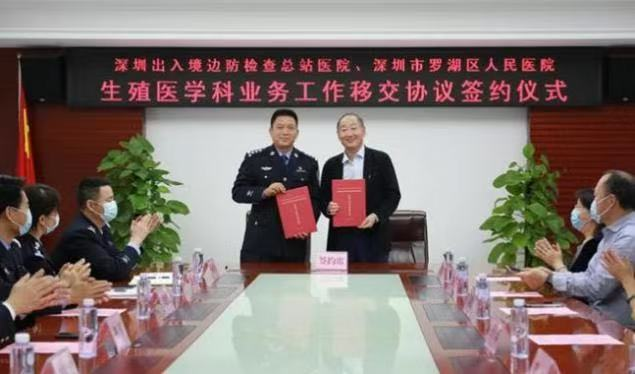
On May 30, 2022, the Shenzhen Family Planning Association, Shenzhen Population Foundation, Luohu District Family Planning Association, and Luohu District People's Hospital held a project signing and unveiling ceremony for the "Happiness Project - Luohu Love Base for Family Planning Families" at our hospital. I have applied for different types of pregnancy assistance subsidies for multiple families. Benefiting from the project, Huize successfully became pregnant and gave birth, and the project achieved significant results.
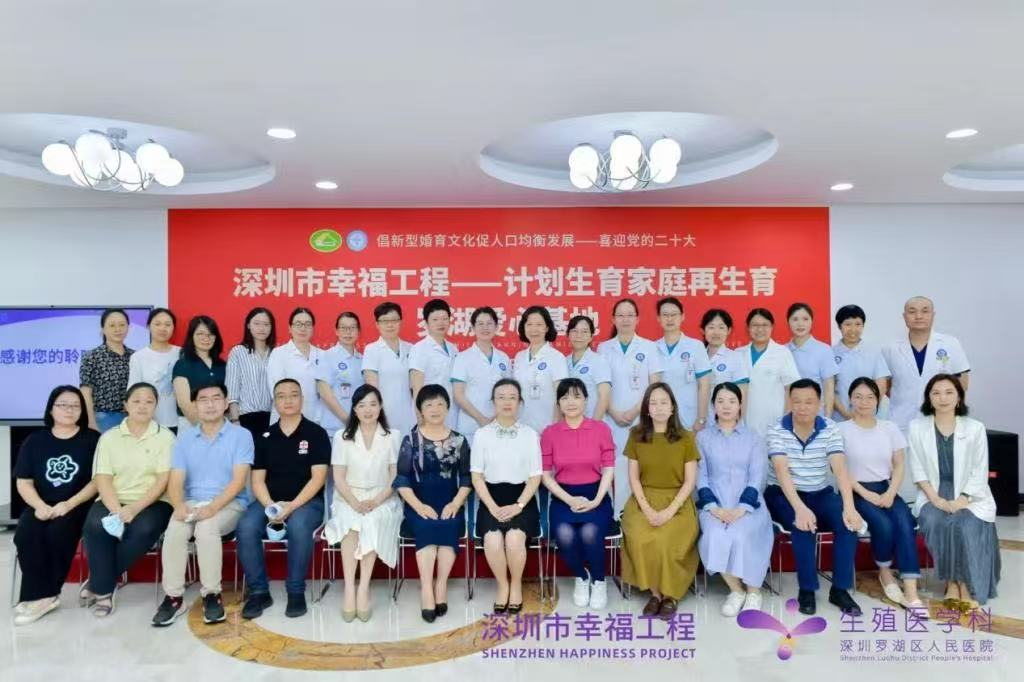
On August 7, 2023, our hospital established the "Shenzhen Luohu People's Hospital Reproductive Medicine Center Puning Branch" at Puning Maternal and Child Health Hospital. On November 9 of the same year, we established the "Luohu District People's Hospital Reproductive Medicine Center Luohu Maternal and Child Branch" at Luohu Maternal and Child Health Hospital.

Shenzhen Luohu People's Hospital Reproductive Medicine Center Puning Branch
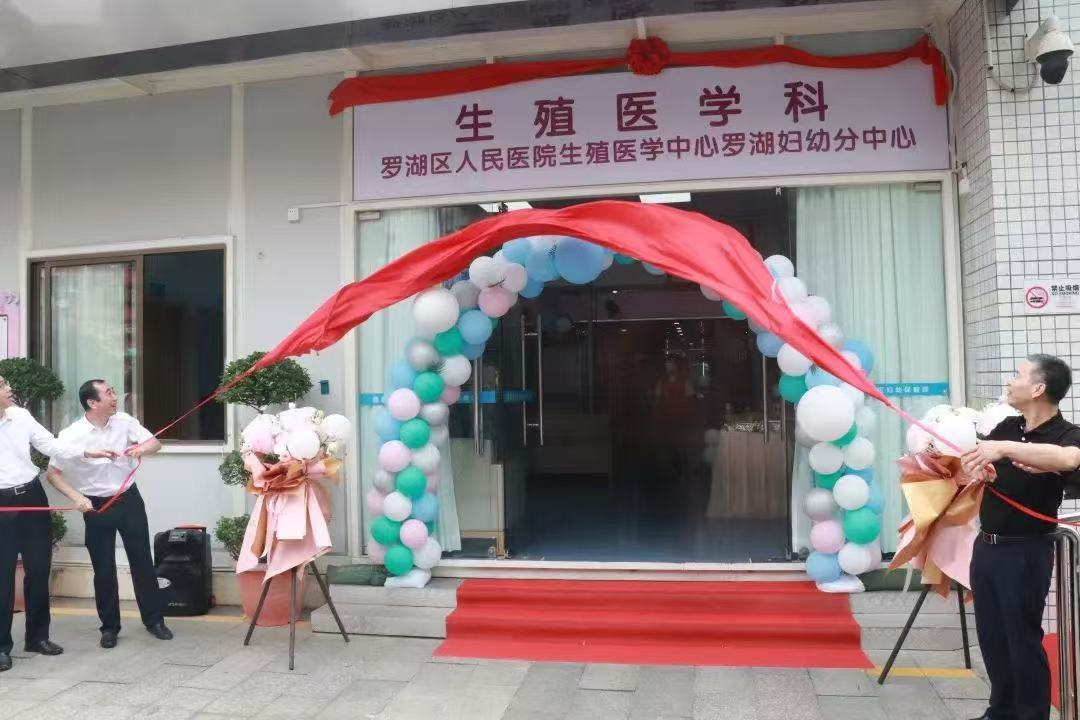
Luohu District People's Hospital Reproductive Medicine Center Luohu Maternal and Child Branch Center
In January 2024, our hospital officially signed a contract with Professor Huang Hefeng, an academician of the CAS Member, dean of Zhejiang University School of Medicine, and a famous reproductive medicine scientist in China, to help the high-quality development of reproduction in Luohu.
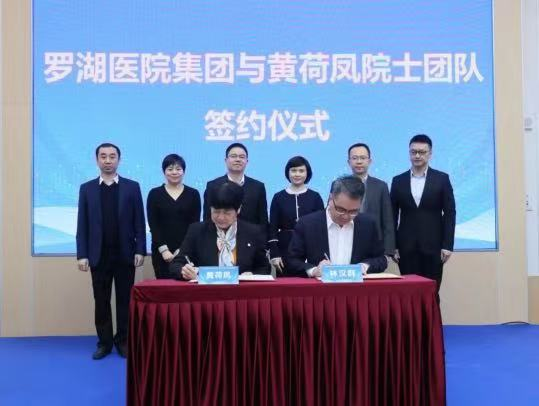
In August 2024, we signed a contract with Guangdong Reproductive Hospital to establish a Guangdong Human Sperm Bank Cooperation Base, and also set up a department for male fertility preservation and management, providing convenience for male fertility preservation in Shenzhen. For male patients who need fertility preservation due to personal reasons (including special diseases such as tumors), there is no need to travel to Guangzhou. Sperm can be collected directly in the laboratory and then transferred to the Guangdong Human Sperm Bank for long-term safe preservation.
On December 28, 2024, the Qingshuihe Branch of Luohu District People's Hospital opened, building a world-class branch area with reproductive medicine as its characteristic. The total area is 22790 square meters, with 500 beds (173 opened in the first phase), expected to accommodate an annual diagnosis and treatment volume of 300000 people. It has carefully constructed characteristic departments such as reproductive women's health, reproductive men's health, reproductive endocrinology, reproductive immunology, reproductive genetics, reproductive traditional Chinese medicine, and reproductive psychology, supplemented by comprehensive departments such as gynecology, obstetrics, pediatrics, endocrinology, and general practice medicine. It will provide one-stop services such as assisted reproduction and eugenics for residents in the Bay Area, enabling millions of families to achieve their dreams.
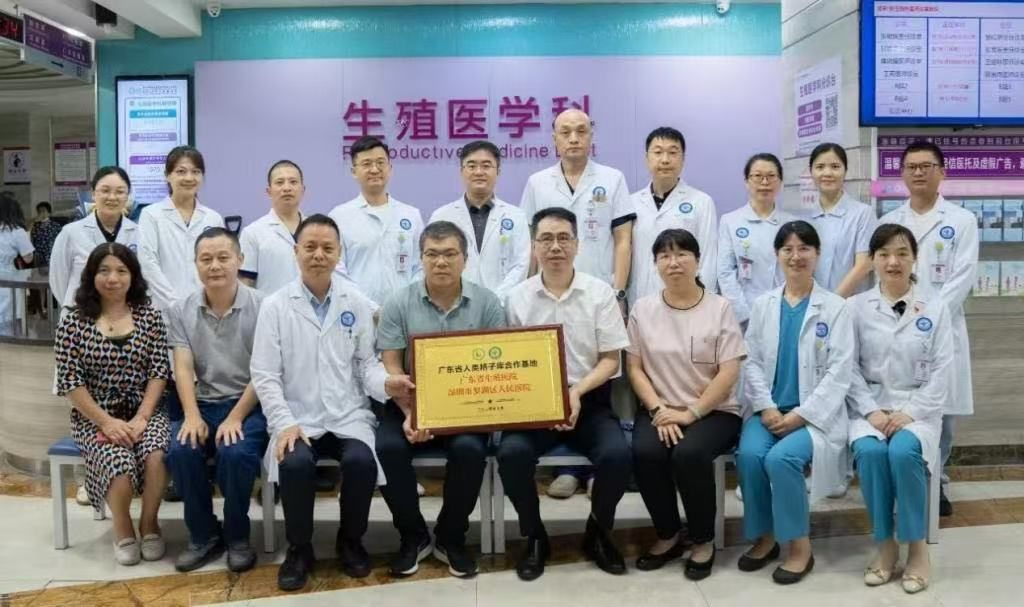
Both the hospital headquarters and the reproductive medicine department of Qingshuihe campus can provide normal consultations. Except for the embryo laboratory and operating room in the first phase, all reproductive medicine outpatient services can be completed in Qingshuihe campus. Patients can flexibly choose to go to the new hospital area or the hospital headquarters for treatment according to their actual situation.
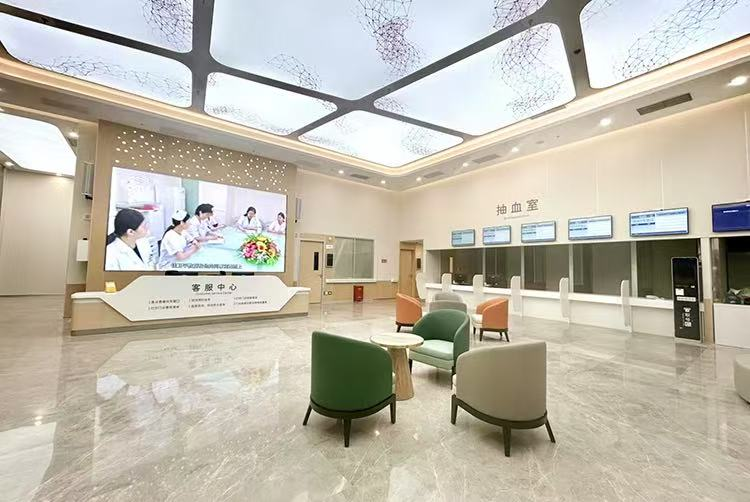
Carry out projects
After decades of development, the Reproductive Medicine Department of Luohu Hospital can provide more than 20 complete service projects, mainly including:
·In vitro fertilization embryo transfer technology
·Intracytoplasmic sperm microinjection technique
·Intrauterine insemination technology
·Sperm egg embryo freezing technology
·Embryo freeze-thaw transfer technology
·Embryo assisted hatching technology
·Egg activation technology, oocyte in vitro maturation technology
·Micro sperm and single sperm freezing technology
·Multiple pregnancy reduction surgery
·Embryo freezing and post resuscitation transplantation surgery
·In vitro fertilization and embryo transfer technology for sperm supply
·Anti ovarian decline technical services
Since the development of human assisted reproductive technology, it has filled multiple technological gaps in Shenzhen and Guangdong provinces. We have successfully produced the first "in vitro fertilization embryo transfer" test tube baby in Shenzhen, the first "intracytoplasmic sperm injection" test tube baby, the first frozen embryo test tube baby, the first "pre implantation genetic diagnosis" test tube baby, and the first "triple freezing" test tube baby in Guangdong Province, leading the development of reproductive technology in the region and reaching an international leading level of technology, realizing the fertility wishes of thousands of infertile families.
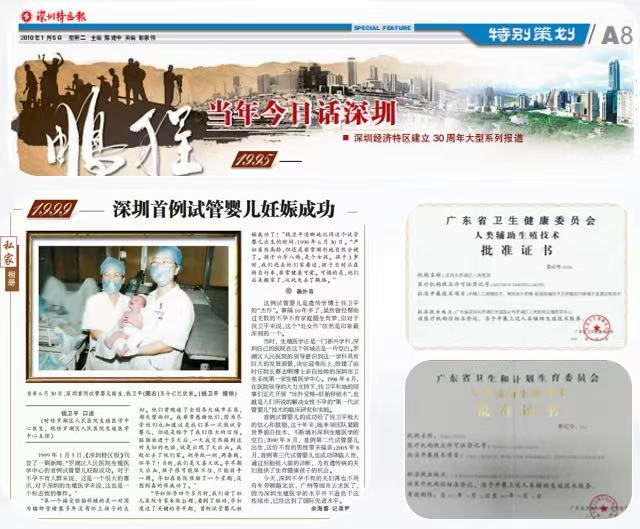
In 1999, the first "first generation test tube baby" was successfully born in the health system of Shenzhen
Advanced equipment
The total area of reproductive medicine subjects is over 5000 square meters, including reproductive gynecology clinics, male clinics, and related functional areas. The laboratories include in vitro fertilization laboratories, semen processing rooms, artificial insemination laboratories, female fertility preservation laboratories, and male science laboratories. Equipped with internationally advanced assisted reproductive technology equipment, including GeriTM Time Lapse embryo culture system, Eppendorf microscopy system, and ASTEC drawer style incubator.
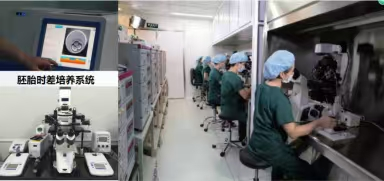
Scientific research achievements
The Department of Reproductive Medicine attaches great importance to scientific research, promoting the continuous improvement of technological level through scientific research. The main research directions include low ovarian function storage, intrauterine adhesions, repeated embryo implantation failures, thin endometrium, fertility preservation and protection, and multimodal research on embryo implantation, constantly making new breakthroughs. The main achievements have been published in world-renowned journals such as Human Genetics, J Cell Physiol, and Stem Cell Rev Rep. In the past five years, we have undertaken 24 scientific research projects at all levels, including 5 national level projects and 4 provincial and municipal level projects. Published over 100 papers in domestic and international journals, authored 3 monographs, and obtained 9 authorized patents.
public welfare
The Department of Reproductive Medicine emphasizes social welfare and has normalized science popularization lectures and community free clinics; The "IVF" fertility assistance charity activity that provides cost reduction for "moss flower families" who have lost or disabled their only child; As the first "Happiness Project - Family Planning Family Reproduction Love Base" in Shenzhen, we provide pregnancy assistance subsidies to eligible families who want to have children again, actively helping families in the city who are willing to have children to solve practical problems and difficulties such as infertility and difficult pregnancy, and have won a good social reputation.